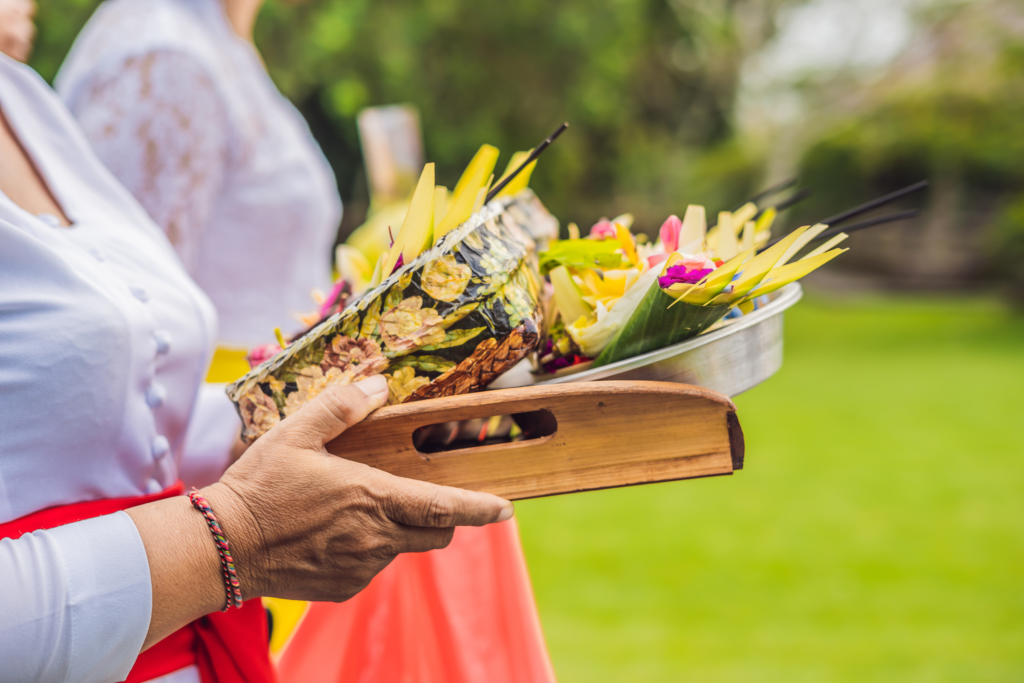
If you’ve ever walked the streets of Bali, chances are you’ve seen small, colorful offerings placed on sidewalks, in front of homes, or in temples. These delicate arrangements, known as Canang Sari, are an essential part of Balinese Hindu culture. But what do they mean, and why are they so important?
In this blog, we’ll dive into the meaning, purpose, and symbolism of Canang Sari, along with why this simple yet powerful ritual is at the heart of daily life in Bali.
What is Canang Sari?
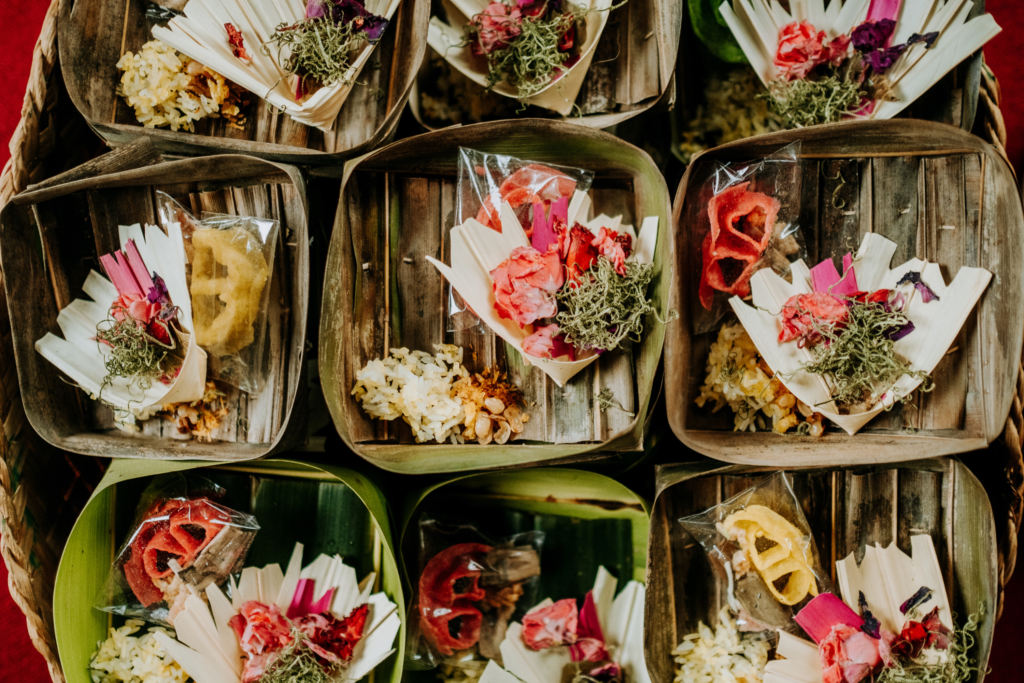

Canang Sari is a daily offering made by Balinese Hindus as a way of giving thanks and maintaining balance with the divine. It consists of a small handwoven palm-leaf tray, filled with flowers, incense, and other symbolic items, and is placed in temples, homes, businesses, and even on sidewalks.
The name itself holds meaning:
- “Canang” refers to the coconut-leaf basket that holds the offering.
- “Sari” means essence, representing the sincerity and gratitude behind the ritual.
More than just a beautiful decoration, Canang Sari is a symbol of harmony, gratitude, and spiritual connection in Balinese Hinduism.
What Do the Colors and Elements of Canang Sari Mean?

Each Canang Sari is carefully arranged with different flowers, each color representing a different Hindu deity:
- White (East) – Symbolizes Iswara, the god of purity.
- Red (South) – Represents Brahma, the god of creation.
- Green or Blue (North) – Honors Vishnu, the god of preservation.
- Yellow (West) – Dedicated to Mahadeva, the god of wisdom.
Along with flowers, offerings also include:
- Betel leaf & lime – A tribute to ancestors.
- Incense (Dupa) – The smoke carries prayers to the gods.
- Small treats like rice or sweets – A sign of gratitude for life’s blessings.
Each element of Canang Sari is thoughtfully placed with deep meaning, making it more than just a simple offering—it’s an expression of faith and balance.
Why Do Balinese People Make Canang Sari Every Day?
In Balinese Hinduism, the philosophy of Tri Hita Karana teaches that life should be in harmony with:
- The Divine (Parahyangan) – Connection with the gods.
- Nature (Palemahan) – Respect for the environment.
- Other People (Pawongan) – Balance in relationships.
By making Canang Sari every morning, Balinese people express gratitude, invite positive energy, and maintain balance in their lives.
Many also believe that placing offerings on the ground helps ward off negative spirits and maintain harmony between good and evil.
Where Can You See Canang Sari in Bali?
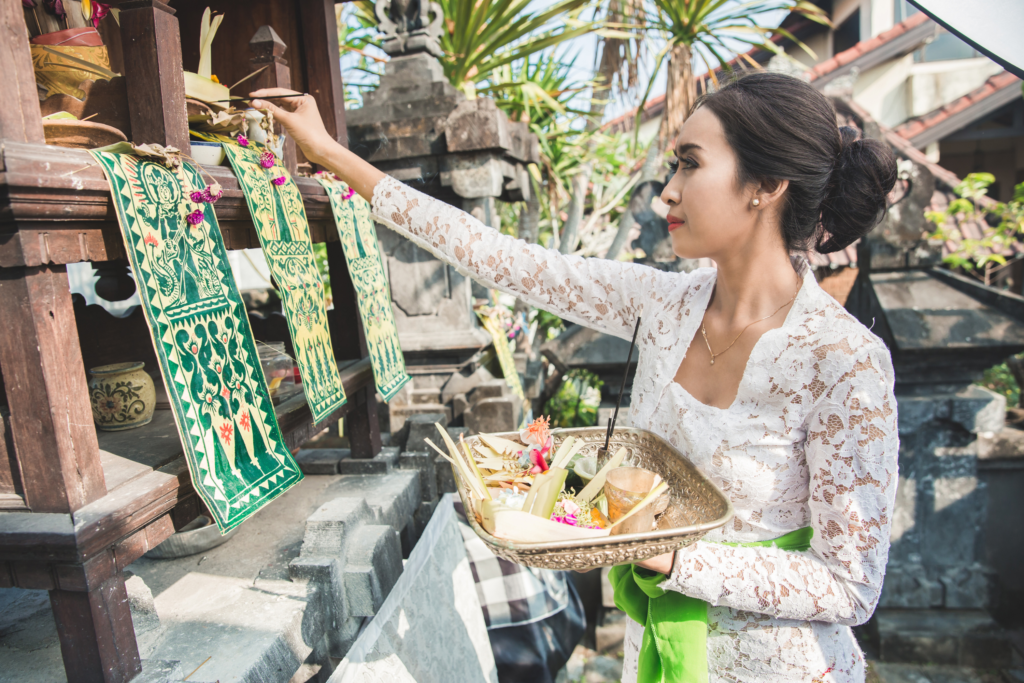
One of the best things about Canang Sari is that you can find it everywhere in Bali!
- At the entrances of homes and shops – For protection and prosperity.
- In temples and shrines – As an offering to the gods.
- On cars and motorcycles – For safe travels.
- Near beaches and nature spots – To give thanks to nature.
- On sidewalks – To neutralize negative energies.
How is Canang Sari Made and Offered?
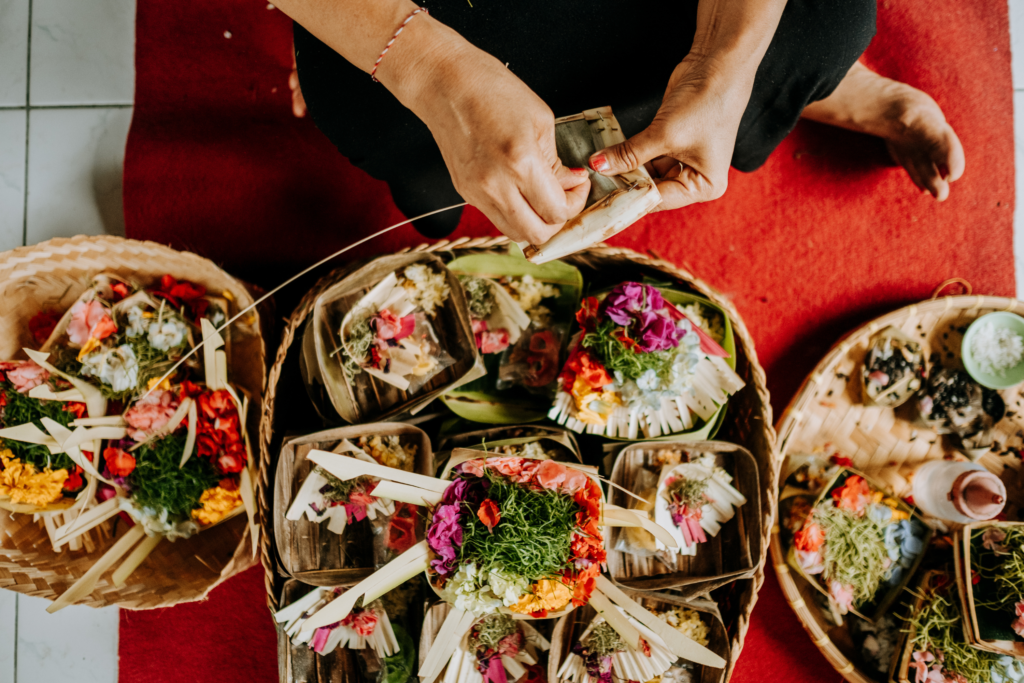
Did you know? Canang Sari is usually prepared by Balinese women every morning before they start their day. The process is a mindful act of devotion and involves:
Crafting the palm-leaf basket – Handmade from young coconut leaves.
Arranging fresh flowers – Placed in a specific pattern.
Adding incense (Dupa) – To carry prayers to the gods.
Saying a short prayer – To express gratitude and invite blessings.
Placing the offering in a sacred spot – At home, in a temple, or on the street.
This daily ritual is not just about placing an offering—it’s about mindfulness, gratitude, and connection.
Can Tourists Participate in Canang Sari Offerings?
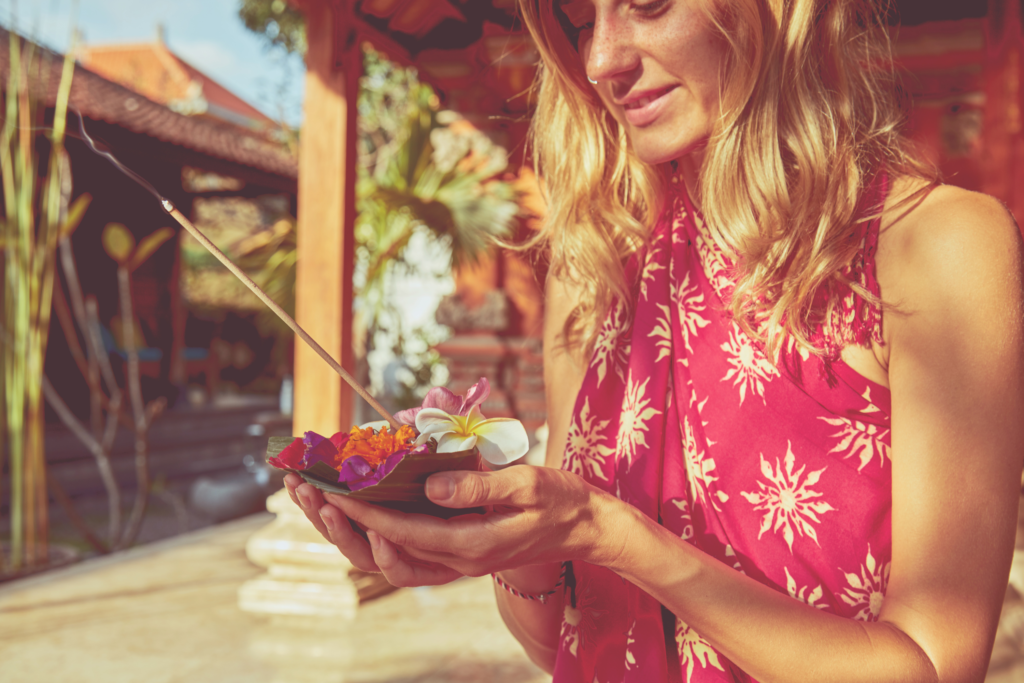
Yes! Many visitors in Bali find it fascinating to learn about and even take part in Canang Sari offerings. If you’re staying in a traditional villa or joining a cultural tour, you may get the chance to make your own offering.
Etiquette Tips for Tourists:
Taking part in Canang Sari is a beautiful way to experience Balinese culture firsthand and gain a deeper appreciation for its spiritual traditions.
- Be respectful when observing or participating in rituals.
- If invited, follow the local guidance carefully.
- Dress modestly when visiting temples.
- Do not touch or move an offering unless given permission.
Canang Sari is more than just a daily ritual. It represents gratitude, harmony, and devotion in Balinese culture. It reflects the deep connection between people, nature, and spirituality, and serves as a reminder that even the simplest acts can have deep meaning.
So next time you visit Bali, take a moment to appreciate these small yet powerful offerings. They are a reminder that gratitude and balance should be a part of everyday life.


